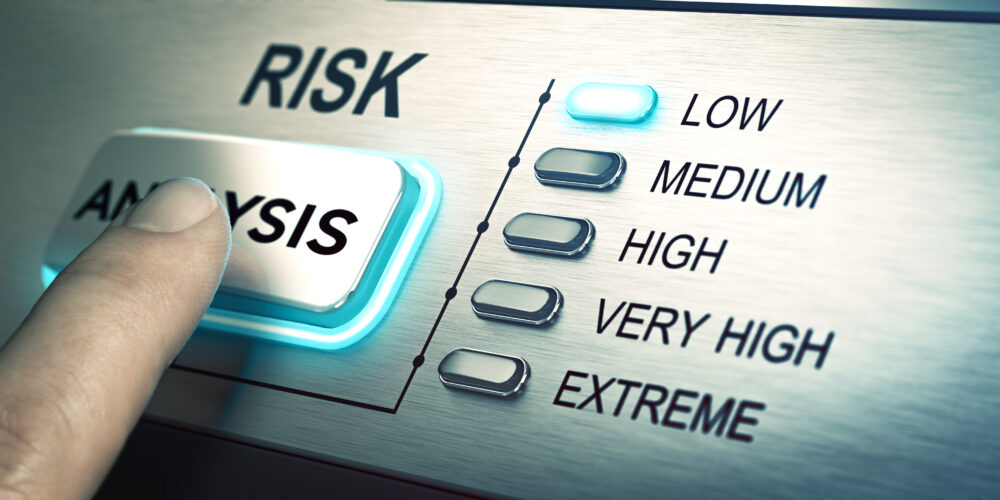Conducting a comprehensive security assessment is imperative to ensure that all of a campus’ possible weak spots and entry points are addressed. By conducting a risk assessment, campus administrators and executives can gain a deeper understanding of the potential physical security threats their property and their people face. This knowledge enables them to develop a proactive strategy, enhancing preparedness and response capabilities.
A risk assessment helps identify weaknesses in a building’s security infrastructure, such as outdated technology, inadequate access control, blind spots, fire hazards, cramped spaces, lack of airflow or poor lighting. Identifying vulnerabilities allows for targeted improvements and reduces the risk of breaches.
While many of the hazards located inside and outside the premises may be obvious, such as working with machinery or chemicals, other risks may be less visible, which may prompt campus administrators to conduct a survey of students, faculty, and staff to ensure the review is thorough.
Building owners have a responsibility to comply with applicable regulations and standards. Some compliance standards enforce physical security risks assessments, so if your organization operates under standards like ISO 27001, HIPAA, PCI DSS, or others, you will need to consult the services of a risk assessor who can conduct an assessment to confirm your practices.
Ensuring that you understand the guidelines for information management, secure handling of sensitive data and ethical transmission of payments, you will be making a solid start in maintaining top-tier physical security.
A thorough risk assessment helps protect not only the physical property but also the people inside it. Schools, colleges, and healthcare facilities should not want to wait for a major threat to take place that endangers students, patients, employees, and visitors. Ignoring such safety procedures could result in injury or loss of life, as well as be a financial and reputational disaster.
By addressing vulnerabilities and implementing appropriate security measures, campuses can create a safe environment for students, patients, staff, faculty and visitors, as well as safeguard valuable assets. The recommendations can be made on a micro and macro level, providing affirmative data and information so administrators and executives can make better strategic decisions.
The Security Risk Assessment Process
- Establish objectives: Clearly define the objectives of the risk assessment. What aspects of security do you want to evaluate? Are there specific areas of concern? Defining clear objectives will help steer the review process in the right direction.
- Gather information: Collect relevant data about the campus, its occupants, and incumbent security measures. This may include floor plans, incident reports, system specifications, and access control records. A thorough understanding of the building’s layout and existing security infrastructure is essential to help identify how in-depth the assessment should be.
- Identify threats: Identify potential threats and hazards that may impact the building’s physical security, such as criminal trespassing, technological vulnerabilities, and weather damage.
- Assess vulnerabilities: Evaluate the vulnerabilities and information you have collated and assess their severity by importance. Look for areas where improvements can be made to improve the individual components as well as enhance the overall security of the structure.
- Determine risks: Analyze the likelihood and potential impact of identified threats on the building’s security. This step helps prioritize risks and allocate resources effectively. Consider the probability of occurrence and the severity of potential consequences.
- Develop mitigation strategies: Based on the identified risks, develop a comprehensive plan to mitigate security threats. This may include implementing enhanced building surveillance systems, patching technology, bolstering training programs, or revising emergency response protocols.
- Implement and monitor: Put the mitigation strategies into action and continuously monitor their effectiveness. Regularly review and update security measures to adapt to changing threats and technological advancements.
How to Get Started
- Consider involving third-party consultants or experts with experience in conducting professional physical security risk assessments. Their expertise can provide valuable insights and ensure a thorough evaluation of your building’s security. They may also consider aspects that you may have not considered.
- Assemble a team that includes key stakeholders, such as building management, security personnel, and relevant department representatives. Collaboration and diverse perspectives will combine to create a more comprehensive assessment. This will also ensure that audits and reviews are conducted more regularly.
- Establish a realistic budget and timeline for the risk assessment and remediation process. Adequate resources and a clear timeframe will help ensure a thorough evaluation without unnecessary delays. It will also allow you to forecast sufficient cash flow and revenue to justify the expenditure.
- Conduct periodic reviews of the assessment findings and update them as needed. Risks and vulnerabilities may change over time, so regular reviews are essential to maintain effective security measures. You will benefit by having a fresh perspective on your risk procedures.
- Act upon the recommendations resulting from the security reviews. Don’t just conduct the assessments and let that be the end of the process. Allocate sufficient resources and prioritize the implementation of actionable and preventative measures based on their urgency and potential impact. Anticipating what might be needed ahead of time is vital for ensuring complete safety across the building.
Remember, a security risk assessment is an ongoing process. Campus officials should periodically reassess their measures to adapt to evolving threats and maintain a robust security posture.
Based in the UK, Mike James writes engaging, relevant and well-researched blog content for the B2B/C markets. He covers a broad range of topics, including HR, marketing, design, technology, cybersecurity, travel and start-ups.
Editor’s Note: This article originally appeared in CS sister publication Security Sales & Integration and has been edited.













